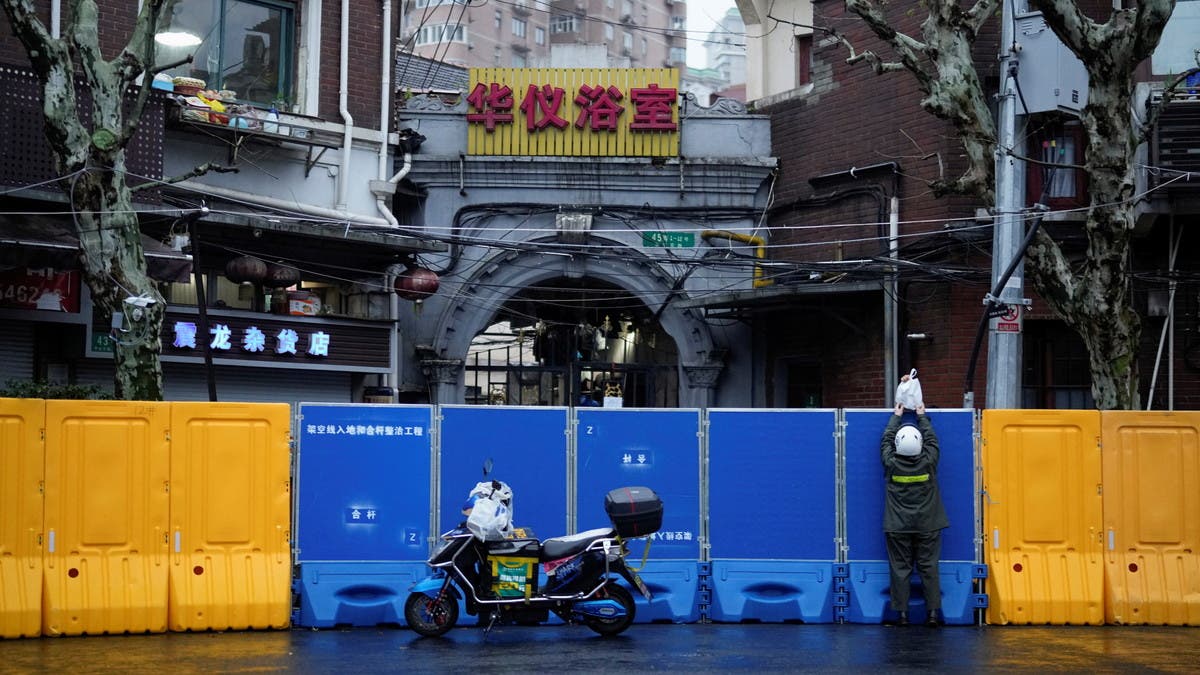Shanghai on Saturday recorded a sharp rise in COVID-19 cases, but a member of the city’s pandemic task force said officials were determined to avoid a full lockdown over the damage it would do to the economy.
Millions of Chinese in affected areas have been subjected to city-wide lockdowns by an omicron-led outbreak that has sent daily case counts creeping ever-higher, though they remain insignificant compared to other countries.
For the latest headlines, follow our Google News channel online or via the app.
Shanghai, however, has aimed to ease disruption with a more targeted approach marked by rolling 48-hour lockdowns of individual neighborhoods and large-scale testing while largely keeping the metropolis of 25 million people running.
At a daily Shanghai press conference Saturday, officials alluded to the importance of avoiding a full lockdown of the huge port city.
“If Shanghai, this city of ours, came to a complete halt, there would be many international cargo ships floating in the East China Sea,” said Wu Fan, a medical expert with the city’s pandemic task force.
“This would impact the entire national economy and the global economy.”
Wu made the comments as city officials also announced that they would begin handing out self-testing kits to Shanghai residents, in the latest sign that the government was expanding its pandemic response.
The northeastern province of Jilin also said Saturday that it had begun distributing 500,000 of the rapid-antigen kits.
Shanghai and Jilin have been the areas hardest hit by the outbreak, which took off in early March.
China had largely kept the coronavirus – which first emerged in the city of Wuhan in late 2019 – under control through its strict zero-tolerance measures.
But that top-down approach is increasingly being questioned amid concerns over the economic impact and public “pandemic fatigue,” especially considering omicron’s less severe symptoms.
The National Health Commission announced two weeks ago that it would introduce the sale in China of rapid antigen self-test kits for the first time, and they have begun to appear on pharmacy shelves.
But Saturday’s announcements appeared to mark their first wide-scale use as part of official pandemic control measures.
China on Saturday reported 5,600 new confirmed domestic transmissions, most of them asymptomatic.
Chinese authorities had watched nervously as a deadly Hong Kong omicron surge sparked panic buying and claimed a high toll of unvaccinated elderly in the southern Chinese city.
Its subsequent spread in mainland China has posed a dilemma for authorities wrestling with how forcefully they should respond.
On Wednesday, Shanghai infectious disease expert Zhang Wenhong, a top doctor in the city’s pandemic fight, called for balancing anti-virus measures with maintenance of “normal life”.
The comments in his widely followed blog indicated growing official tolerance for voices who question the lockdown approach.
Shanghai’s softer strategy has so far failed to stop cases from rising, and the localized lockdowns have provoked grumbling online and a run on groceries in some districts.
Shanghai on Saturday reported another steep rise in new local transmissions to 2,269 – around 40 percent of the national total.
Read more:
China continues ‘severe and complex’ fight against COVID-19
EU medicines regulator recommends AstraZeneca’s drug for COVID-19 prevention
Singapore to lift COVID-19 travel curbs for vaccinated travelers


 World3 years ago
World3 years ago
 World3 years ago
World3 years ago
 Business1 year ago
Business1 year ago
 Entertainment8 years ago
Entertainment8 years ago
 World8 years ago
World8 years ago
 Entertainment8 years ago
Entertainment8 years ago





